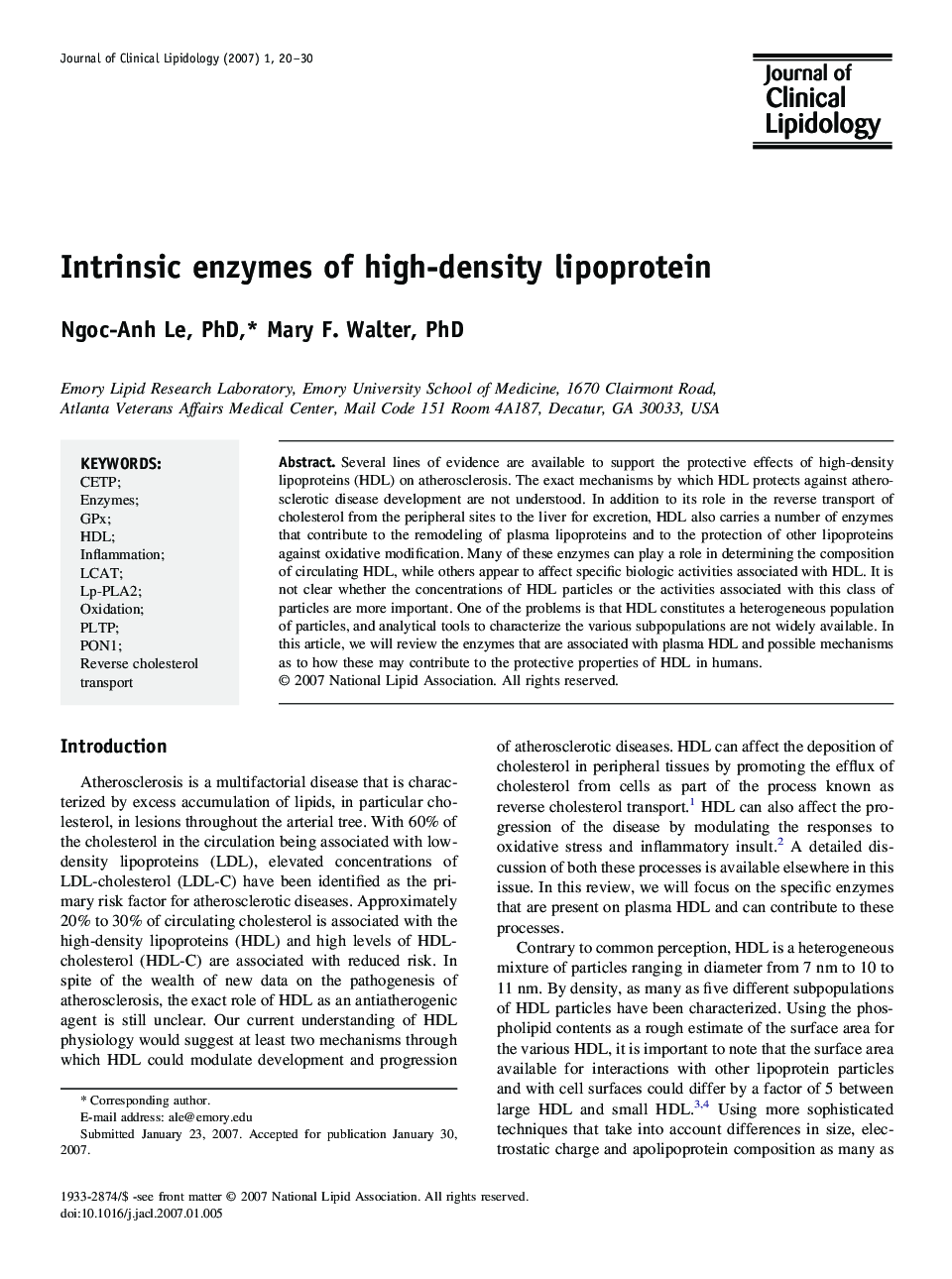| Article ID | Journal | Published Year | Pages | File Type |
|---|---|---|---|---|
| 2967129 | Journal of Clinical Lipidology | 2007 | 11 Pages |
Several lines of evidence are available to support the protective effects of high-density lipoproteins (HDL) on atherosclerosis. The exact mechanisms by which HDL protects against atherosclerotic disease development are not understood. In addition to its role in the reverse transport of cholesterol from the peripheral sites to the liver for excretion, HDL also carries a number of enzymes that contribute to the remodeling of plasma lipoproteins and to the protection of other lipoproteins against oxidative modification. Many of these enzymes can play a role in determining the composition of circulating HDL, while others appear to affect specific biologic activities associated with HDL. It is not clear whether the concentrations of HDL particles or the activities associated with this class of particles are more important. One of the problems is that HDL constitutes a heterogeneous population of particles, and analytical tools to characterize the various subpopulations are not widely available. In this article, we will review the enzymes that are associated with plasma HDL and possible mechanisms as to how these may contribute to the protective properties of HDL in humans.
